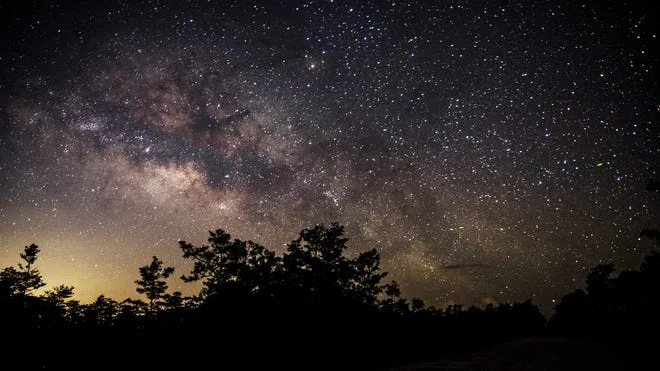
Catch the Milky Way’s Dazzling Display This Memorial Day Weekend
Get ready for a celestial treat! The Milky Way, our home galaxy, is poised to be exceptionally visible over the Memorial Day weekend, offering stargazers a stunning astronomical spectacle. This vibrant display is due to a combination of factors, primarily the moon's cycle and the Milky Way's high visibility from our vantage point in the Northern Hemisphere.
As experts at Techpus.com, we're bringing you all the details on how, when, and where to witness this breathtaking phenomenon. Prepare to be amazed as billions of stars arc across the night sky.

What Makes the Milky Way Visible Now?
"Milky Way season," the period when the galaxy's bright center is most easily seen, typically spans from February to October, but the best viewing opportunity arrives between March and September in the Northern Hemisphere. This late-May window, specifically from Tuesday, May 20, to Friday, May 30, presents the most favorable conditions because it falls between the last quarter moon and the new moon phase. This timing ensures darker skies, allowing the Milky Way's brilliance to truly shine.
A new moon represents the start of a new lunar cycle, when the illuminated side of Earth's natural satellite is facing away from our planet. The new moon is Tuesday, May 26th, the day after Memorial Day.
Where to Find the Milky Way
For those in the Northern Hemisphere, look southward, ideally from elevated locations like mountain ranges, national parks, or remote coastlines. Experts recommend looking when the sky is darkest — between midnight and 5 a.m. "Stargazers can observe the Milky Way galaxy by looking for the Summer Triangle, a shape formed by three bright stars." The Milky Way rises in the southeast, travels across the southern sky, and sets in the southwest. If you find yourself in the Southern Hemisphere you're in luck -- your view of the Milky Way is even more direct.
Essential Tips for Optimal Viewing
To maximize your chances of spotting the Milky Way, heed these tips:
- Minimize Light Pollution: Escape city lights and seek out dark sky locations.
- Check the Weather Forecast: Clear skies are crucial for optimal visibility.
Weather conditions for viewing in California?
Luckly the sky in Modesto and Sacramento is expected to be cloudless on Tuesday night, when the best galaxy viewing conditions begin, according to to the National Weather Service's seven-day forecast. The forecast in Fresno and Merced calls for clear skies late Tuesday, the weather service said. Mostly clear conditions are also expected in San Luis Obispo on Tuesday evening, the federal weather agency said.
A Reminder of Our Place in the Cosmos
The Milky Way, our home galaxy, is a spiral galaxy spanning an incredible 100,000 light-years! It's part of the Local Group, a cosmic neighborhood containing over 50 other galaxies. Viewing the Milky Way connects you to something grand and spectacular, so don't miss your chance to experience this wonder.
Will you be venturing out to catch a glimpse of the Milky Way this Memorial Day weekend? Share your plans and observations in the comments below! Let us know where you plan to observe from, and whether you succeed!